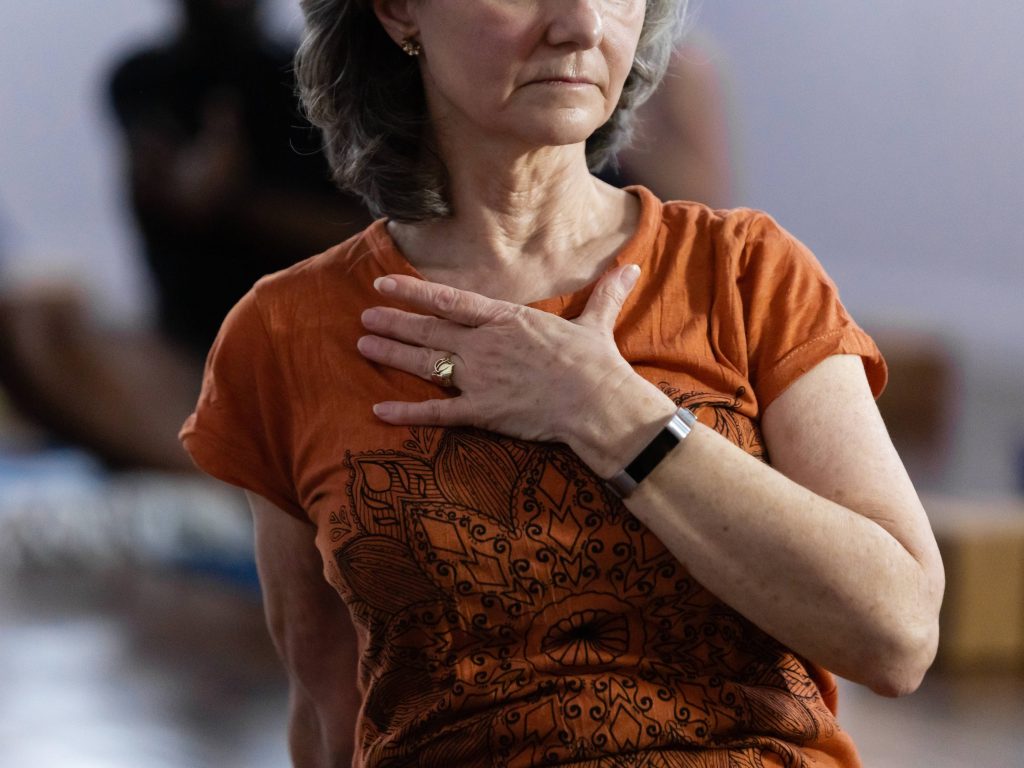Try this out:
- Write down the 3 most important ingredients to nourish your whole self: body, mind, and spirit. Can you name a great recipe for what helps you feel healthy and fulfilled?
- Now write down the last time you enjoyed at least 1 of the 3 items on your list. Was it yesterday? A month ago? A year ago?
- If it’s been a while, write down why you might not be nourishing yourself. What obstacles or excuses come up?

For many of us, we know the recipe for wholeness but we choose foods, actions, and situations leaving us depleted and exhausted. I’m quick to throw my self-care out the window and instead open the door wide to more – more ideas, more food, more time spent on something out there. When I pause to reflect on how I’m feeling, 90% of the time the answer is “Stressed!” How can I remember to say NO to that which will not truly feed me? At this overextended stage in my life, I need to start my NOurishment off with a big NO — just like the wise word already told me to do!
Sometimes the NO is simply a pause, a space for discernment. My biggest obstacle to feeling nourished is time. When I am not rushing, even the most mundane task can bring satisfaction. But when I feel pressured, even the most nourishing self-care routine becomes another thing on my to-do list. I find pausing especially difficult when I’m facing disappointment and grief. I feel empty and start to believe I can consume something that will fill me up – snacks? Travel? Accomplishments? Stories? I’m tricked into eating these experiences, mistaking them for nutritious building blocks, but I’m starving no matter how much I take in.
It is likely that I want too much and this burning desire for more—well, burns me out. Yoga describes 3 essential aspects, or gunas, which make up everything in the universe. Rajas refers to the energy of speeding up (growth and stimulation). The energy of slowing down (decay and stagnation) is called Tamas. Sattva is the quality of peace – an ephemeral balancing point we pass through as we inevitably speed up and slow down. Goldilocks described Sattva when she found the porridge that was not too hot or too cold, but “just right”. I long for Sattvic peace, but my responsibility to my family, my work, even my yoga, fill me with desire for action.
I can see my own tendency towards Rajas. Passionate and driven, I enjoy the momentum. My fear of Tamas pushes me into a Rajasic fever, where it actually feels alarming to settle down and move back a bit to find center. To stop leaning forward feels like a sort of death to me, the loss of some opportunity – but ironically, I miss the opportunity of countless moments because I am not clear enough to receive what is actually already there. I believe the lie that I can seek nourishment from out there somewhere.
So I feel like I am full to the brim, but not nourished. I am consuming empty calorie moments out of convenience, out of habitual momentum, or to distract from discomfort. If I am not cultivating Sattva, I miss out on the life-sustaining nutrition of whatever I am consuming. Check out if this is true for you by looking back to the list of nourishing ingredients you made earlier – each of them has the potential to drain your energy, as well as fill you up. One day yoga nidra works wonders, another time only a meaningful connection with a loved one will supply the juice needed to plump up a withered heart. The recipe fluctuates, just as we do, changing with the cycling gunas from growth to rest and back again.
With everything in our world encouraging us to rush through life, how can we slow down and say NO to more out there in order to make space for receiving? Julia Cameron in The Artist’s Way puts it this way: “Success or failure, the truth of a life really has little to do with its quality. The quality of life is in proportion, always, to the capacity for delight. The capacity for delight is the gift of paying attention.” The NOurishment is always here for us. May we slow down, pause, and increase our capacity for receiving.
Tracy Vacura spent decades teaching dance, which means she loves fully-embodied movement and also feels passionate about understanding anatomy and alignment. She enjoys working with people to center, find true importance, and then magnify their own unique gifts in the world. You can find her teaching at Yoga Sanctuary, holding energy therapy sessions as a Certified Healing Touch Practitioner, or co-leading the Holistic Yoga Teacher Training & Personal Transformation program. Tracy’s teachers include Ben Vincent, Judith Lasater, and Tanya Boigenzahn at Devanadi. Tracy seeks healing and welcoming for all bodies.

























